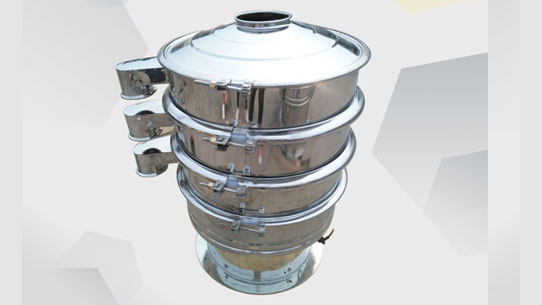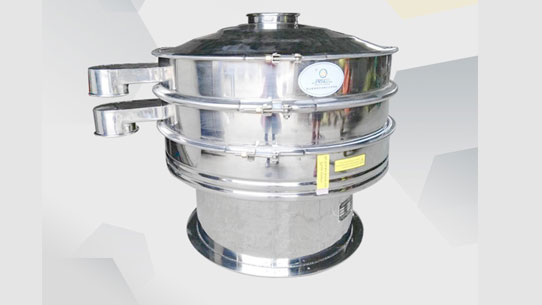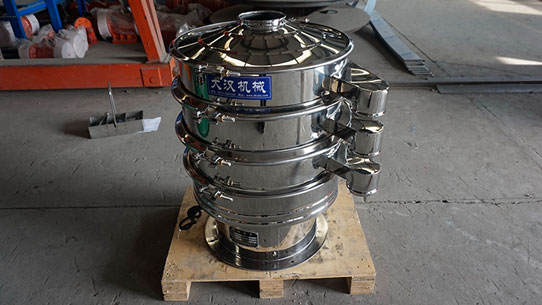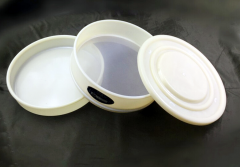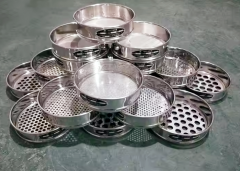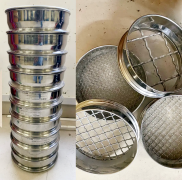Test sieve clogging solutions
Tuesday June-17 2025 17:42:37
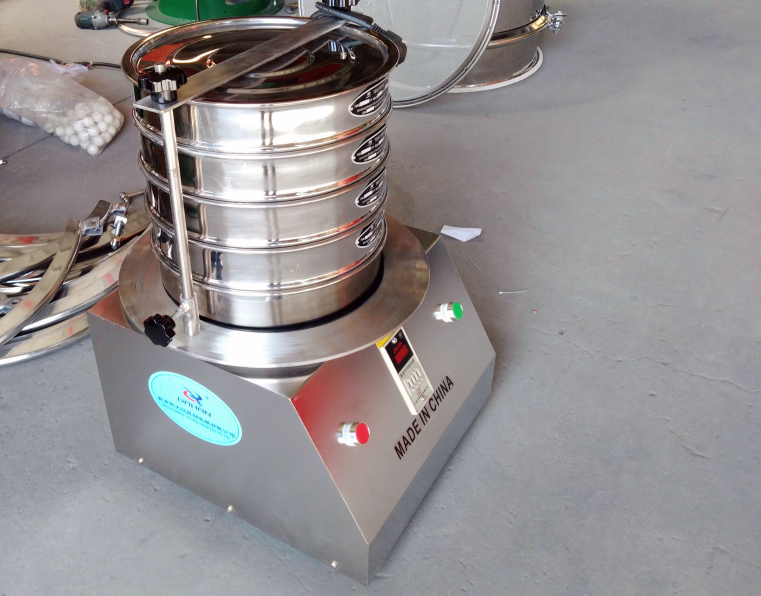
Test sieves play an important role in material particle size analysis, but sieve clogging is a common problem, which may be caused by material characteristics, sieve design or improper operation, which will seriously affect the screening efficiency and the accuracy of the results. To solve this problem, targeted measures need to be taken according to the cause of the clogging.
Main causes of test sieve clogging
Clogging caused by material characteristics: materials containing water or grease are easy to adhere to the sieve to form lumps (such as flour, wet mineral powder); needle-like, fibrous particles (such as fibrous materials, crushed ore) and other irregular shapes are entangled with each other and stuck in the mesh; high fine powder content or particle size is close to the sieve size, forming a "bridge" phenomenon, which leads to clogging.
Sieve and equipment factors: Improper selection of sieve material or aperture, such as too small mesh, deformation caused by non-wear-resistant material, or insufficient sieve tension causing material accumulation. Insufficient vibration frequency and amplitude, the material stays on the sieve surface for a long time and cannot be effectively screened. After long-term use, residual materials accumulate on the surface of the sieve, and the mesh is not cleaned in time, resulting in clogging of the mesh.

Improper operation and other factors:
① Adding too much material too quickly or too much: Adding too much material at one time will cause the screen surface to be overloaded, the material cannot be fully dispersed, and the screen holes are easily blocked.
② Insufficient screening time: Failure to fully screen will cause some fine powder to fail to pass through the screen holes and accumulate on the screen surface.
③ Improper vibration frequency or amplitude: The vibration parameters are set unreasonably, and the material cannot be effectively shaken, or it is not enough to make the stuck particles fall off.
④ Improper screen tension: The screen is loose or unevenly tensioned, which will affect the screening effect and even cause local deformation of the screen, making it more prone to clogging.

Test sieve clogging solutions
I. Material pretreatment optimization
Control material humidity: Dry the wet material (such as using an oven or fluidized bed dryer) to reduce the moisture content to less than 5%. Add anti-caking agents (such as talc and magnesium stearate) to improve material fluidity and reduce adhesion.

Adjust the particle shape of the material: crush or grind the fibrous or needle-like materials first to reduce the proportion of irregular particles. Before sieving, remove large particles through a coarse screen to prevent large particles from squeezing and clogging the sieve holes.
2. Adjustment of screen and equipment parameters
Reasonable selection of screen: select the material (such as stainless steel screen for corrosion resistance, polyurethane screen for wear resistance) and aperture (the recommended sieve aperture size is 1.2-1.5 times the target particle size) according to the characteristics of the material. Use a multi-layer screen structure with "coarse on top and fine on bottom" to reduce the accumulation of fine powder.
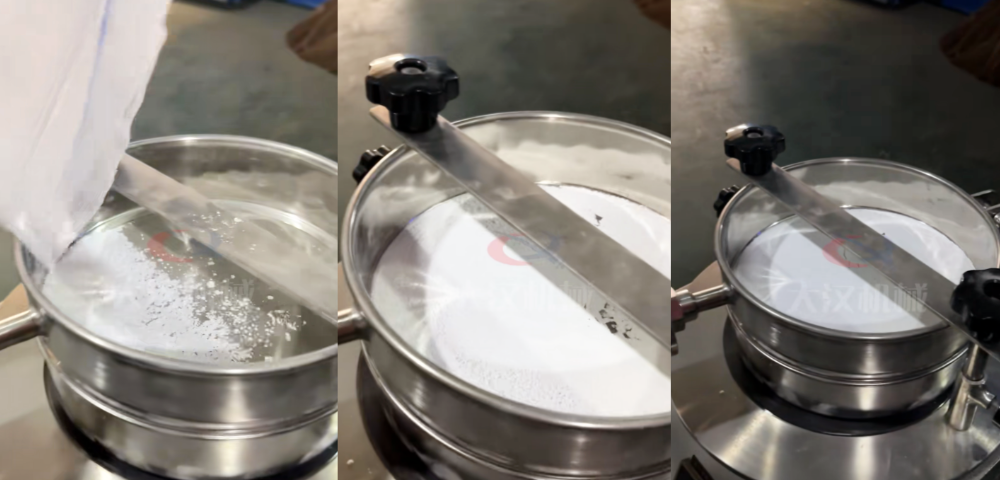
Optimize vibration parameters: increase the vibration frequency (such as from 300 times/minute to 500 times/minute) or amplitude (0.5-1mm) to enhance the jumping force of the material and prevent retention. Adjust the inclination angle of the screen surface (generally 5°-15°) to speed up the sliding speed of the material.
3. Blockage cleaning method
Physical cleaning: ① Use a rubber hammer to tap the edge of the screen to shake off the stuck particles (suitable for small-scale cloggings). ② Use compressed air (pressure ≤0.5MPa) to blow from the back of the screen to remove the adhering material. ③ Use a soft nylon brush to scrub along the screen texture to avoid scratching the mesh (metal brushes are prohibited).
Chemical and physical cleaning: For sticky materials, soak the screen in a neutral detergent (such as detergent) water solution for 10-15 minutes, then rinse with clean water. Or put the screen into an ultrasonic cleaner and use high-frequency vibration to peel off stubborn attachments (suitable for precision screens).
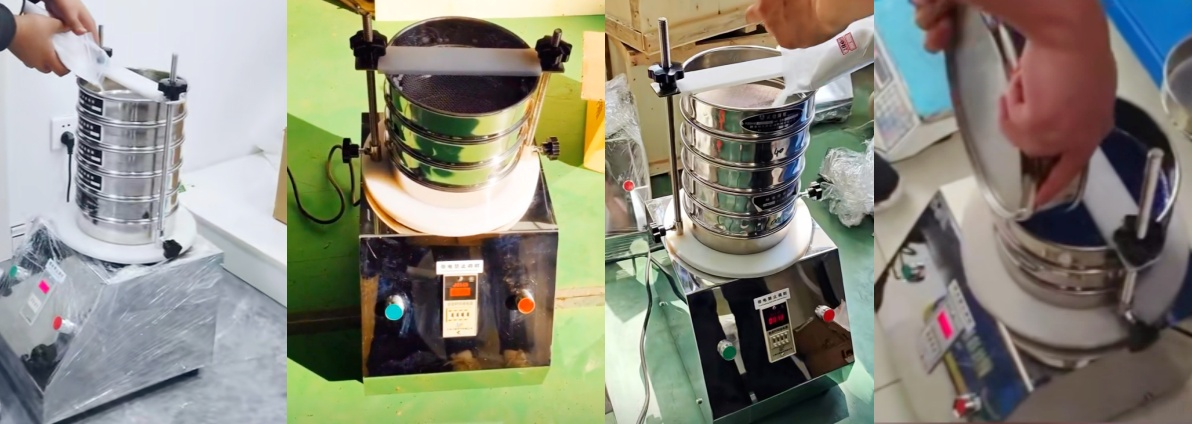
Equipment-assisted cleaning: Install an automatic screen cleaning device (such as a bouncing ball, electromagnetic vibrator) to prevent clogging by continuously impacting the screen.
Long-term maintenance recommendations:
Regularly replace the screen: Clean the screen after each use, check for damage or deformation, and replace the aging screen in time, especially when frequently screening fine powders or corrosive materials;
Check whether the motor vibration is normal: Uneven vibration can also cause material concentration and aggravated clogging. Avoid humid environments when storing screens to prevent metal screens from rusting and causing mesh clogging;
Train operators to use equipment in a standardized manner: Improve equipment efficiency and reduce human damage.
Special material handling case
|
Material type |
Cause of clogging |
Solution |
|
Chinese medicine powder |
Contains mucus and many fibers |
Add 2% silica anti-caking agent before sieving, use polyurethane screen + low-frequency vibration (reduce fiber entanglement). |
|
Wet quartz sand |
High moisture content and many angular particles |
First dried by drum dryer, then use perforated plate screen (aperture 5mm), and 0.8mm amplitude vibration screening. |
|
Plastic particles |
Electrostatic adsorption leads to agglomeration |
Screen grounding eliminates static electricity, adds antistatic agent (such as ethoxylated fatty amine), and uses stainless steel screen. |
Precautions
Safe operation: Disconnect the power supply of the equipment during cleaning, and wear protective glasses for high-pressure air blowing.
Screen protection: Avoid using sharp tools to clean to prevent the mesh from expanding or deforming.
Experimental consistency: If you need to maintain the screening accuracy, it is recommended to calibrate the screen pass rate with standard particles (such as glass beads) before each use.

The above methods can effectively solve the clogging problem of the test sieve and improve the screening efficiency. If clogging occurs frequently, it is necessary to re-evaluate the matching between the material characteristics and the sieve selection. If further analysis of the clogging problem caused by a specific material is required, the material name and particle size range can be provided.


